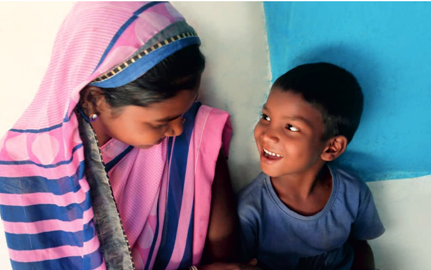ASER 2021: Annual Status of Education Report (Rural)
- 19 Nov 2021
On 17th November 2021, the 16th Annual Status of Education Report (ASER) 2021 (Rural) was released by Pratham foundation, an innovative learning organization created to improve the quality of education.
- The report was prepared on the basis of the telephonic survey conducted in rural areas of 581 districts across 25 states and three union territories between September and October. As many as 76,706 households, 7,299 schools in 17,184 villages across India were covered in the survey.
- ASER reports on the schooling status of children in the 5-16 age group across rural India and their ability to do basic reading and arithmetic tasks.

Aim of the Survey
- The survey was aimed at finding out how children in the age group of 5-16 studied at home since the onset of the pandemic and the challenges that the schools and households now face as schools reopen across states.
The ASER 2021 Survey explored the following areas:
- Children's Enrollment
- Paid Tuition Classes
- Access to Smartphones
- Learning Support at Home
- Access to and Availability of Learning Materials
- Additional areas such as engagement with learning activities, and challenges of remote learning
- School Survey
Important Findings
Enrollment in Govt. Schools
- There has been an overall increase in the proportion of children enrolled in govt schools between 2018 and 2020 i.e. from 64.3% to 65.8%. However, in the year 2021, the enrollment suddenly went up to 70.3%. This was mainly due to:
- Financial distress caused by the pandemic
- Free facilities available at the government schools
- Private schools’ failure to conduct online classes
- Migration during the lockdown
- The report pointed out that the maximum increase in government schools has been registered in Uttar Pradesh (13.2 per cent), followed by Kerala (11.9 per cent).
- Enrollment in Pvt. Schools: The enrolment rate in private schools has however gone down from last year. In 2020, the enrolment rate was 28.8% and in 2021 the enrolment rate went down to 24.4%.
Availability/Access to Smartphones
- Availability of smartphones increased from 36.5% in 2018 to 67.6% in 2021.
- More children in private schools had smartphone at home (79%) compared to government school going children (63.7%).
- Although over two thirds of all enrolled children have a smartphone at home, just over a quarter of these have full access to it for their studies (27%), while close to half have partial access (47%) and the remaining quarter have no access at all (26.1%).
By Grade: Children in higher classes having more access to a smartphone as compared to children in lower grades. For example, 39.3% children in Std I-II have no access to a smartphone despite having one at home, as opposed to 17% children in Std IX or higher.
Parent’s Education & Smartphone
- Household economic status (proxied here by parents’ education level) affects smartphone availability. As parents' education level increases, the likelihood that the household has a smartphone also increases: in 2021, over 80% of children with parents who had studied at least till Std IX had a smartphone available at home, as compared to just over 50% children whose parents had studied till Std V or less.
- Notably, though, even among children with parents in the ‘low’ education category, over a quarter of households had bought a new smartphone for their children's studies since the lockdown began in March 2020.
Tuition
- The proportion of children taking tuition has increased from 2018 to 2021, regardless of grade, school type, or sex. Currently, almost 40% children take paid private tuition classes.
- The largest increases in the proportion of children taking tuition are seen among children from the most disadvantaged households.
Learning Support at Home
- The proportion of enrolled children who receive learning support at home has decreased by almost 8 percentage points for both government and private school going children since 2020, with the sharpest drop visible among children in higher grades. Decreasing family involvement is driven by school reopening, with children who had returned to school receiving less help at home than those whose schools remained closed.The reduction in help with studies is driven largely by less support from fathers.
- Help at home is also related to parents’ education level. While close to 80% children with parents in the‘high’education category received help at home, this proportion is under 50% for children whose parents have studied up to Std V or less.
Learning Materials available for Children
- Almost all enrolled children have textbooks for their current grade (91.9%). This proportion has increased over the last year, for children enrolled in both government and private schools.




